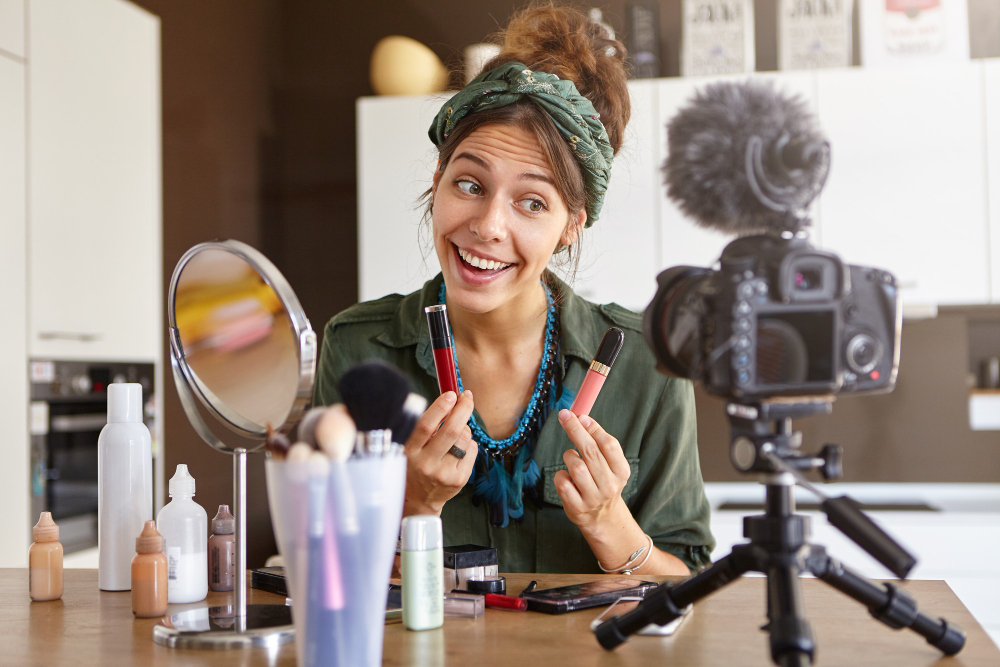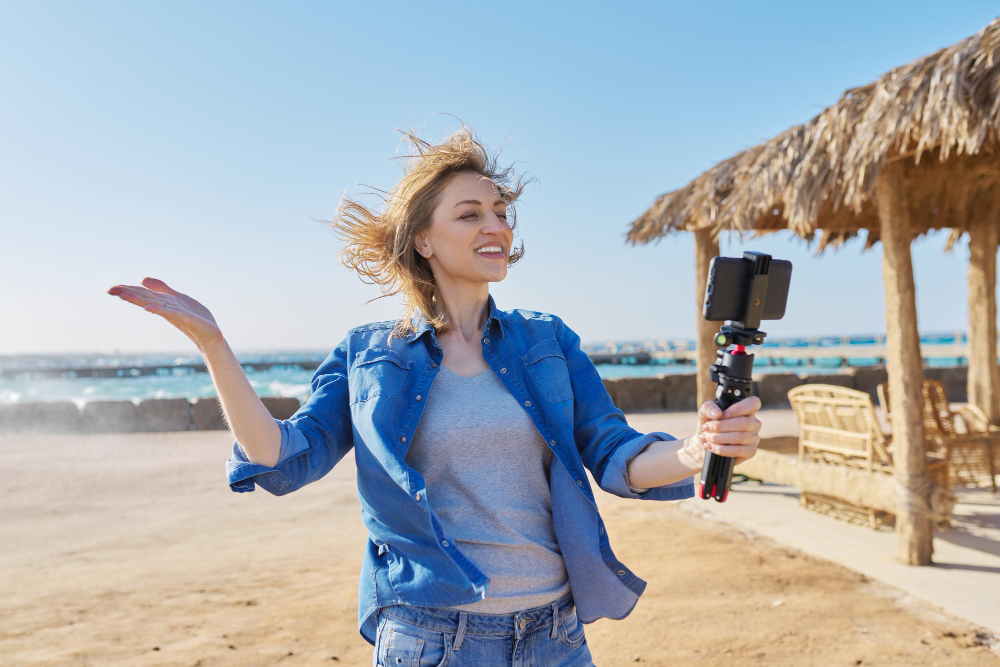In the crowded digital space, brands are always looking to stand out, connect with audiences and drive results. Influencer marketing is one of the most powerful ways to do that, by tapping into the trust, reach and authenticity of content creators. While many brands are attempting to jump on the influencer bandwagon, only those with a solid strategy see long-term success.
This guide explores 10 influencer marketing tactics that deliver strong ROI. We’ll break down each tactic, how it works, why it’s effective, and how to use it in your campaigns.
Índice de Contenidos
- 1 Why Proven Tactics Matter in Influencer Marketing
- 1.1 Tactic #1 — Partner with Micro-Influencers for Higher Engagement
- 1.2 Tactic #2 — Create Authentic, Story-Driven Content
- 1.3 Tactic #3 — Repurpose User-Generated Content Across Channels
- 1.4 Tactic #4 — Use Affiliate Models to Incentivize Influencers
- 1.5 Tactic #5 — Run Limited-Time Campaigns to Create Urgency
- 1.6 Tactic #6 — Co-Create Products or Collections with Influencers
- 1.7 Tactic #7 — Tap into Niche Communities for Targeted Reach
- 1.8 Tactic #8 — Monitor in Real-Time
- 1.9 Tactic #9 — Repurpose Influencer Content into Paid Ads
- 1.10 Tactic #10 — Build Long-Term Partnerships for Sustained Growth
- 1.11 All Together Now
Why Proven Tactics Matter in Influencer Marketing
The fast growth of influencer collaborations has also brought an influx of poorly planned campaigns. Without clear goals, the right partners or a strategic framework, brands risk wasting resources and damaging their reputation.
Using proven influencer marketing strategies helps mitigate those risks. By studying influencer marketing examples that have delivered results, you can spot patterns that will work for your audience. These proven tactics then become a blueprint for scalability — once you have a process that works, you can replicate and refine it across different product launches, seasonal campaigns or geographic markets.
Tactic #1 — Partner with Micro-Influencers for Higher Engagement
One of the biggest changes in influencer marketing over the last 5 years has been the rise of micro-influencers — creators with smaller but highly engaged followings. Typically, these influencers have between 5,000 and 50,000 followers.
Unlike large scale influencers who may have millions of followers but lower engagement rates, micro-influencers often have a closer connection with their audience. This personal connection translates to higher trust and more authentic recommendations. For brands, this means better conversions especially for niche markets.
An influencer marketing example in the beauty industry proves this well. A skincare brand partnered with 25 micro-influencers, each focused on sustainable living. The campaign generated 3x higher engagement than a single celebrity post, proving relevance beats reach.
If you’re just starting out, begin with a small test group of micro-influencers. Monitor their engagement rates, content quality and audience interaction before scaling the campaign.
Tactic #2 — Create Authentic, Story-Driven Content

Audiences are becoming more resistant to sales messages. They prefer stories that feel real and relatable. With influencer marketing, this means giving influencers the creative freedom to present your product in a way that fits their personal style.
Story-driven campaigns might include “day in the life” videos, behind-the-scenes glimpses or personal testimonials. For example, a fitness brand partnered with influencers to document their journey training for a charity marathon, subtly featuring the brand’s athletic wear.
This creates an emotional connection between the audience and the product. Unlike one-off posts, story-driven content keeps your brand top of mind across multiple touchpoints, increasing the chances of conversion.
When planning such campaigns, don’t dictate every detail. Provide influencers with brand guidelines but let them craft the narrative so it resonates with their audience.
Tactic #3 — Repurpose User-Generated Content Across Channels
Influencer marketing doesn’t have to stop at the influencer’s platform. Many of the best campaigns repurpose influencer-created content as part of broader marketing efforts.
For example, a travel brand ran a campaign with influencers showcasing unique local experiences. The brand then repurposed these posts for email newsletters, website banners and paid social ads. Not only did this extend the life of the content but also ensured consistency across all channels.
This tactic also reduces content production costs. Instead of creating new content from scratch, you can tap into the high-quality visuals your influencers have already produced. Just make sure you secure the rights to use their content before repurposing it.
Repurposing works well with seasonal promotions or product launches, reinforcing your message across multiple customer touchpoints.
Tactic #4 — Use Affiliate Models to Incentivize Influencers

One of the best ways to ensure influencers are motivated is by tying their earnings to performance. Affiliate marketing models — where influencers earn a commission for each sale they generate — are a great fit for influencer marketing.
This aligns incentives, as influencers will promote your product consistently if their income depends on conversions. For brands, it reduces the upfront risk, as you’re paying for results and not just impressions.
A popular e-commerce clothing store ran an affiliate influencer program and saw a 35% increase in sales over a quarter. The transparency of tracking links allowed the brand to identify top performers and double down on those partnerships. But this model works best for high-margin products, so make sure your commission rates are competitive enough to attract quality influencers.
Tactic #5 — Run Limited-Time Campaigns to Create Urgency
Scarcity is a powerful psychological trigger in marketing. When applied to influencer marketing, limited-time offers can create a sense of urgency that drives audiences to take action on the spot.
For example, a food delivery app ran a campaign with influencers offering a 48-hour discount code. The result was a surge in sign-ups during the promotional window, way above the brand’s usual daily numbers.
To make this strategy work, coordinate closely with influencers to ensure timely posting and consistent messaging. The campaign should also be backed up with reminders through email or retargeting ads to capture anyone who engaged but didn’t convert immediately.
This works best when the incentive is genuinely valuable and time-sensitive, like exclusive access to a new product or a significant discount.
Tactic #6 — Co-Create Products or Collections with Influencers
Co-creation turns influencers into true brand partners. In this influencer marketing approach, influencers help design, name or curate a product or collection, giving them a personal stake in its success.
A great influencer marketing example comes from the fashion industry, where a streetwear brand partnered with an influencer to design a limited edition sneakers. The launch sold out in 24 hours, driven mostly by the influencer’s loyal following.
Co-creation also generates rich storytelling opportunities. The influencer can share behind-the-scenes content about the design process, further engaging the audience. This requires more investment and planning, but can yield high returns when executed well.
Tactic #7 — Tap into Niche Communities for Targeted Reach
While mass market campaigns can generate awareness, influencer marketing is most effective when highly targeted. Niche communities — whether around a hobby, lifestyle or profession — often have dedicated and engaged members.
For example, a tech gadget brand partnered with influencers in the mechanical keyboard community. Despite the small audience size, the campaign delivered an outsized ROI because it spoke directly to a passionate, purchase-ready group.
Finding the right niche requires research. Look for communities where your product solves a clear problem or enhances a shared passion. The deeper the alignment, the better the results.
This also tends to produce higher-quality user feedback, which can guide future product development.
Tactic #8 — Monitor in Real-Time

One of the biggest mistakes in influencer marketing is to set a campaign live and wait until the end to see the results. Monitor in real-time to adjust mid-campaign for better performance.
For example, if engagement is low on Instagram Stories but high on TikTok, redirect resources accordingly. If a particular influencer’s audience responds well to a certain message, double down on that creative.
Investing in a platform that offers real-time analytics also helps to detect fraud, such as fake followers or inflated engagement. This means you can get more genuine results from your spend.
Regular check-ins with influencers during the campaign can also refine your approach, keep both sides aligned on performance goals to maximise the effectiveness of your efforts.
Tactic #9 — Repurpose Influencer Content into Paid Ads
Paid ads can amplify the reach of influencer-created content far beyond their organic audience. Known as whitelisting, this allows brands to run ads through the influencer’s account, maintaining authenticity while expanding reach.
In an influencer marketing example, a skincare brand ran Facebook ads using influencer testimonials. The ads outperformed the brand’s own creative by 40%, mostly because they felt more relatable and trustworthy.
When using this tactic, make sure you have the proper permissions and a clear agreement on how the content will be used. Paid amplification works best when targeting lookalike audiences or retargeting website visitors who have already shown interest.
This blend of influencer authenticity and paid reach often delivers some of the highest ROI in digital marketing.
Tactic #10 — Build Long-Term Partnerships for Sustained Growth
Short-term campaigns can spike awareness, but influencer marketing delivers its full potential through long-term relationships. Consistency builds familiarity and trust, so the influencer’s audience is more receptive to repeated brand messages.
An ambassador program can also integrate influencers deeper into your marketing strategy, from product development feedback to event appearances. This creates a cohesive brand narrative across multiple touchpoints.
An outdoor gear brand recently worked with a group of influencers over 2 years. Their audience came to associate the brand with quality and adventure, resulting in steady year-over-year growth in both sales and brand recognition.
For best results, choose partners whose personal brand aligns naturally with yours, so authenticity continues to build over time.
All Together Now
The best influencer marketing tactics use a combination of the above points. Whether micro-influencers, authentic stories or data-driven campaigns, it’s all about building real relationships with your audience.
Study influencer marketing examples and adapt what works for others to your brand for short-term wins and long-term loyalty.
Done right, influencer collaborations become one of your most consistent growth channels, turning content creators into brand ambassadors and delivering results beyond the reach of your competitors.


